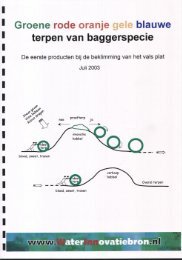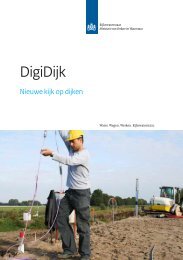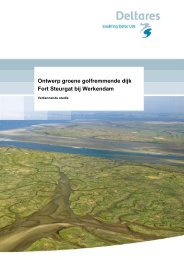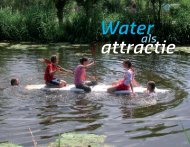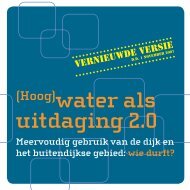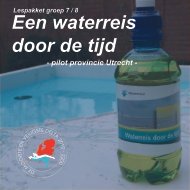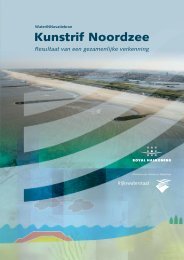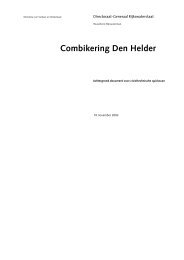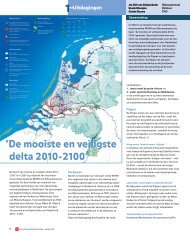Creating opportunities to adapt to climate change through innovative ...
Creating opportunities to adapt to climate change through innovative ...
Creating opportunities to adapt to climate change through innovative ...
You also want an ePaper? Increase the reach of your titles
YUMPU automatically turns print PDFs into web optimized ePapers that Google loves.
3.2 The two main chains3.2.1 BE Industrial agglomerate AquaClusterThe meeting of the 21 st of January was mostly dedicated <strong>to</strong> this part, as most of theparticipants were private players interested in short/mid-term results.The format of the meeting and the variety of the presentations led <strong>to</strong> several types ofdiscussions on the <strong>to</strong>pic.Attendance List– Corus– Milieufederatie– The Firm– Provincie Noord-Holland– Acacia Water / Eco-polder project (Ref. 5.11)– DeltaresContributions from– REDstack (Ref. 5.12)– Eneco – ACRRES (Ref. 5.13)Firstly, most were somewhat cautious about Blue Energy technology, as it is still <strong>to</strong>o much inthe future <strong>to</strong> be considered. However, at this stage, the chain is strong enough <strong>to</strong> stand onits own without a Blue Energy plant, so we could focus on the later parts.Secondly, the possibilities of sustainable technologies <strong>to</strong> be linked with co-siting initiativesare both broad and unproven. Corus expressed from the beginning that they are interestedin what these <strong>opportunities</strong> bring, from the perspective of linking with their wastemanagement, not with the products it may bring.Thirdly, one big criticism against potential pioneers is that so many of them still go bankruptevery year, even with government support, which has not been helping their popularity withthe usual public inves<strong>to</strong>rs.We can conclude that even on co-siting <strong>through</strong> waste management there is still muchground <strong>to</strong> cover: Convincing business cases must be built, defining the ownership of thewaste and each party’s responsibilities and still must be able <strong>to</strong> stand on their own, mostlywithout subsidies. Most of the <strong>opportunities</strong> we could find (such as shrimp growing) had noserious representative <strong>to</strong> make an investment in the area. If this waste is linked further withfood production, it involves a whole series of regulation barriers and public image issues. Tomanage such complicated linkages can be a job by itself.The linkages that became most clear with the discussion were the connection betweenCorus and Eneco’s similar ACRRES project, and The Firm with “Cluster” Management.Corus needs a reliable partner with which <strong>to</strong> trust their carbon credits, and Eneco is a strongenough partner <strong>to</strong> suggest it will not let the project fail out of liquidity issues.If more linkages are created, it might be an idea <strong>to</strong> let a private company specialized inprocess management <strong>to</strong> maintain the connections between all the parties, as theserelationships can be consuming, and Corus, for example, presented it as one of the majorbarriers <strong>to</strong> trying out with several small projects from different parties.11



